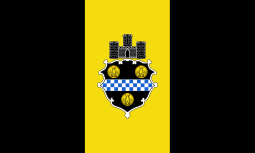Edward V. Babcock
Edward Vose Babcock (January 31, 1864 – September 2, 1948) was a lumber industrialist who served as Mayor of Pittsburgh from 1918 to 1922.
Biography
Early life
Edward Vose Babcock entered the lumber business from an early age. He ran successfully for City Council in 1911 and began making a political name for himself.
Pittsburgh politics

Unlike his predecessor "Joe the builder", Babcock's administration had little time to implement much policy, they were too busy dealing with the triple threat of a massive steel strike that created much social dissension and unrest, the 1918-1919 flu pandemic that hit Pittsburgh especially hard, all this while at the family dinnertables and company lunch rooms around the city the women's suffrage movement tested the strength of families and employers.
Despite all of those challenges to Babcock's focus on his agenda, he did make some lasting accomplishments including expansion and groundbreaking of new parks and playgrounds, along with the modernization of some key traffic arteries within the city. In response to the suffrage movement, Babcock became the first mayor to appoint a woman to a cabinet-level position within the city.
Later life
After leaving the mayor's office Babcock continued his political career at the county level, becoming a commissioner in 1927. During his rule of Allegheny County he was successful in pushing through the opening of the Allegheny County Airport in West Mifflin, he also was instrumental in providing county help to the city for the opening of the triplet bridges (6th, 7th and 9th Street Bridges).
He was also extremely generous, purchasing at personal expense 4,000 acres (16 km²) of land for the expansive "North Park" and "South Park" in the county. He retired in 1931 and died in 1948, being buried in Homewood Cemetery.
Legacy
- Babcock Boulevard in the North Hills of Pittsburgh is named for him.
- Babcock State Park in West Virginia.
- Babcock Ranch and Babcock Preserve in Florida.
- The highly profitable Babcock Lumber and Boom Company, operating out of Davis, West Virginia from 1907, was responsible for devastating environmental damage to much of surrounding Tucker County, including Canaan Valley, Dolly Sods and the Blackwater Canyon. These areas were clear-cut and the landscape converted into a tinderbox by the residual slashings. By 1910, fires swept over the wasteland, often burning continuously from spring until the first snows. In 1914, with the county virtually denuded of standing trees, the ground burned continually for 6 months. When the fires subsided, thin mineral soil and bare rock were all that remained. Uncontrollable soil erosion and flooding further degraded and depopulated the region, which bears the scars of the conflagration to the present day.[1]
| Political offices | ||
|---|---|---|
| Preceded by Joseph G. Armstrong |
Mayor of Pittsburgh 1918–1922 |
Succeeded by William A. MaGee |
References
- ↑ Brooks, Maurice (1965), The Appalachians (Series: The Naturalist's America), Illustrated by Lois Darling and Lo Brooks, Boston: Houghton Mifflin Company, pp 127-128.
